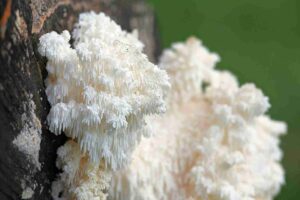INTRODUCTION TO MUSHROOMS GROWING BASICS FOR BEGINNERS

Embarking on the journey of mushrooms cultivation at home is both rewarding and engaging. Whether you’re a novice or have some experience, this guide will walk you through the essentials of mushroom growing, ensuring a successful start to your mushroom cultivation adventure.
UNDERSTANDING MYCELIUM
Mycelium, the fungal equivalent of plant roots, is a vital component in mushroom cultivation. It’s typically white and spreads through organic materials, aiding in decomposition. It’s important to distinguish between healthy mycelium and signs of contamination, like in Pink Oyster mushrooms, where a pink hue indicates a healthy mycelium.
CHOOSING THE RIGHT MUSHROOM VARIETIES
Some mushrooms are more suited for beginners due to their ease of cultivation. Varieties such as Blue oyster, Lion’s mane, and Grey oyster mushrooms are recommended for starters. These types balance ease of growth with culinary uses.
PREPARING THE SOIL/SUBSTRATE
The substrate, which acts as the growing medium for mushrooms, varies based on the type of mushroom being cultivated. For instance, oyster mushrooms prefer a substrate of hardwood sawdust mixed with nitrogen sources, while button mushrooms thrive on a manure-based substrate.

– TEMPERATURE AND HUMIDITY CONDITIONS
Different mushroom species require different temperature ranges for optimal growth. Oyster mushrooms generally favor cooler temperatures, while lion’s mane mushrooms can tolerate a broader range. Creating and maintaining the right temperature and humidity is crucial for healthy growth.
– OXYGEN AND CO2 REQUIREMENTS
Like humans, mushrooms need oxygen and release CO2. Ensuring proper air circulation in the growing area is essential for the development of mushroom pins and overall health.
– HARVESTING TECHNIQUES
Each type of mushroom has specific signs that indicate readiness for harvest. For example, oyster mushrooms are usually ready within 4-7 days after the appearance of pins. Signs like the direction of the mushroom caps and changes in color at the edges can signal the right time to harvest.
ADVANCED TIPS AND INSIGHTS FOR MUSHROOM CULTIVATION
FINE-TUNING YOUR MUSHROOM GROWING ENVIRONMENT
Once you’ve mastered the basics, it’s time to refine your mushroom growing environment for optimal yields. Here are some advanced tips:
- Controlled Lighting: While mushrooms don’t require sunlight like plants, subtle lighting can mimic natural conditions and support the growth cycle. Use indirect, soft lighting for a few hours a day to simulate a natural environment.
- Precision in Humidity and Temperature: Invest in a digital hygrometer and thermometer to accurately monitor your growing environment. Slight adjustments can make a significant difference in the growth and quality of your mushrooms.
- Air Circulation and Filtration: Proper ventilation is key in mushroom cultivation. Consider installing a small fan in your growing area to ensure adequate air exchange and prevent CO2 buildup, which can be detrimental to mushroom growth.
SCALING UP YOUR MUSHROOM CULTIVATION
As you gain confidence in your mushroom growing skills, you might consider scaling up your operations:
- Expanding Varieties: Experiment with different mushroom species to diversify your cultivation. Each variety brings its own unique challenges and rewards.
- Larger Growing Spaces: If space allows, expand your growing area to accommodate more substrates or different mushroom species. This can range from larger indoor setups to outdoor mushroom beds, depending on your climate and available space.
- Automation for Efficiency: Look into automating certain aspects of the growing process, such as humidity and temperature control, to maintain consistent conditions with less manual intervention.
TROUBLESHOOTING COMMON MUSHROOM GROWING CHALLENGES
Even experienced growers encounter issues. Here are some common problems and solutions:
- Contamination: The most common challenge in mushroom cultivation is contamination. Maintain strict hygiene, sterilize all equipment, and isolate any contaminated cultures to prevent spread.
- Poor Fruiting: If your mushrooms are not fruiting well, reassess your temperature and humidity levels. Sometimes, a minor tweak in environmental conditions can stimulate better fruiting.
- Slow Growth: Slow or stunted growth can often be attributed to inadequate nutrition or incorrect moisture levels in the substrate. Ensure your substrate is properly prepared and remains consistently moist but not waterlogged.

HARVESTING AND STORAGE
Proper harvesting and storage techniques are essential to maximize the shelf life and quality of your mushrooms:
- Timely Harvesting: Harvest mushrooms at the right stage of growth. Overripe mushrooms can deteriorate quickly and may affect the quality of subsequent flushes.
- Storage Conditions: Store harvested mushrooms in a cool, dry place. For short-term storage, refrigeration is often best. For long-term storage, consider drying or pickling.
THE ART AND SCIENCE OF MUSHROOM CULTIVATION
Mushroom cultivation is a blend of art and science, requiring patience, attention to detail, and a willingness to learn from each growing cycle. As you continue your cultivation journey, embrace both the challenges and the joys of growing your own mushroom.